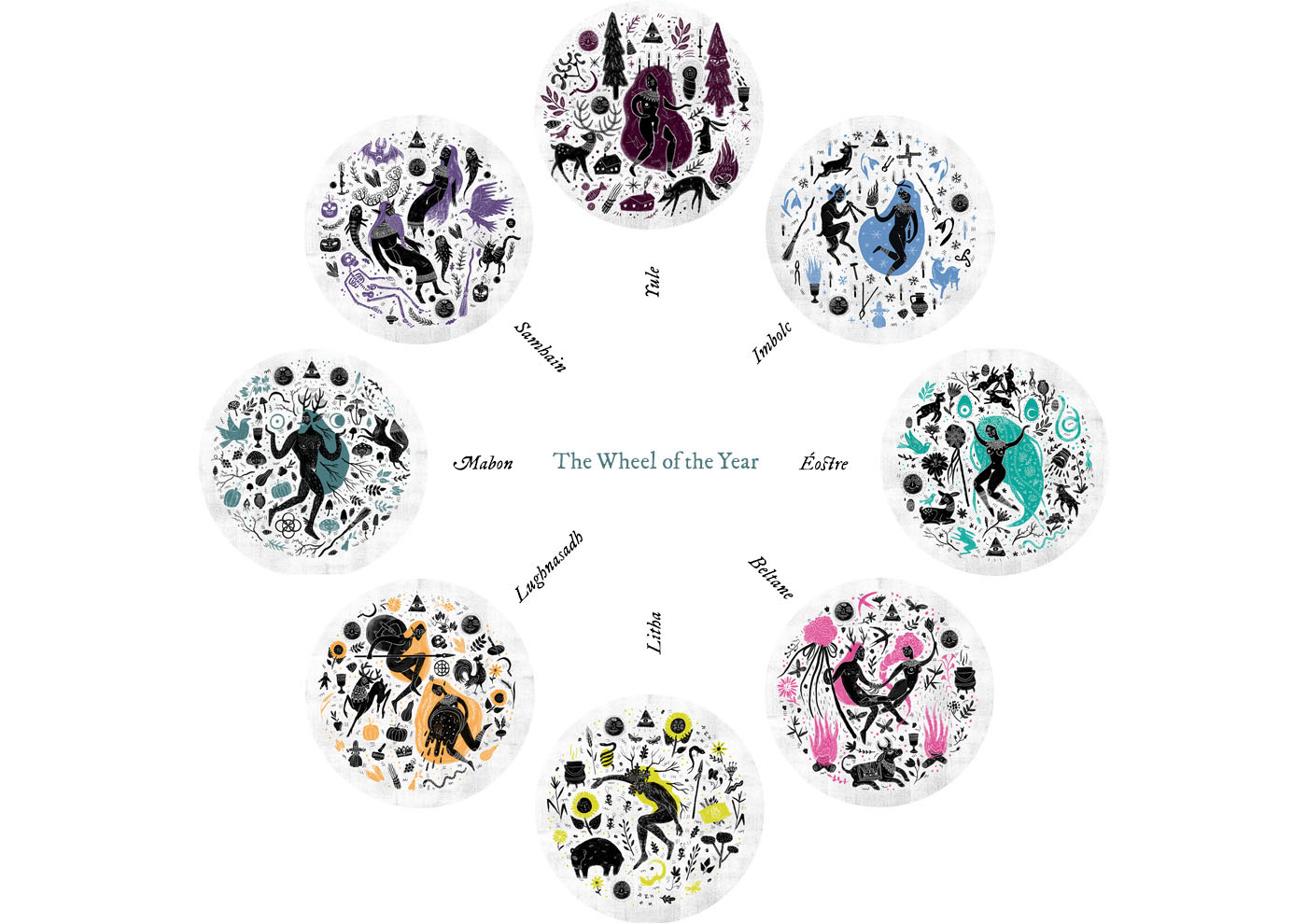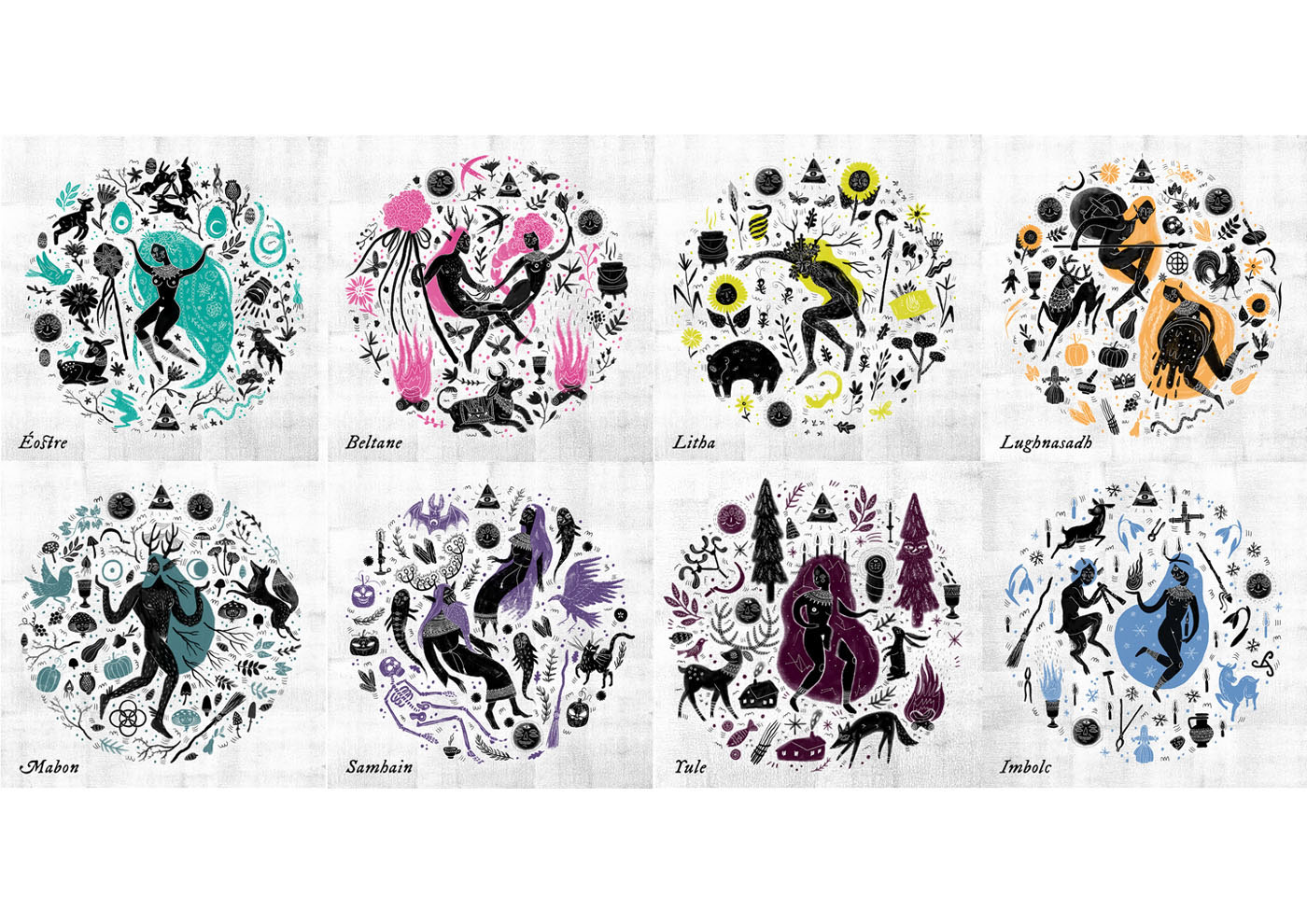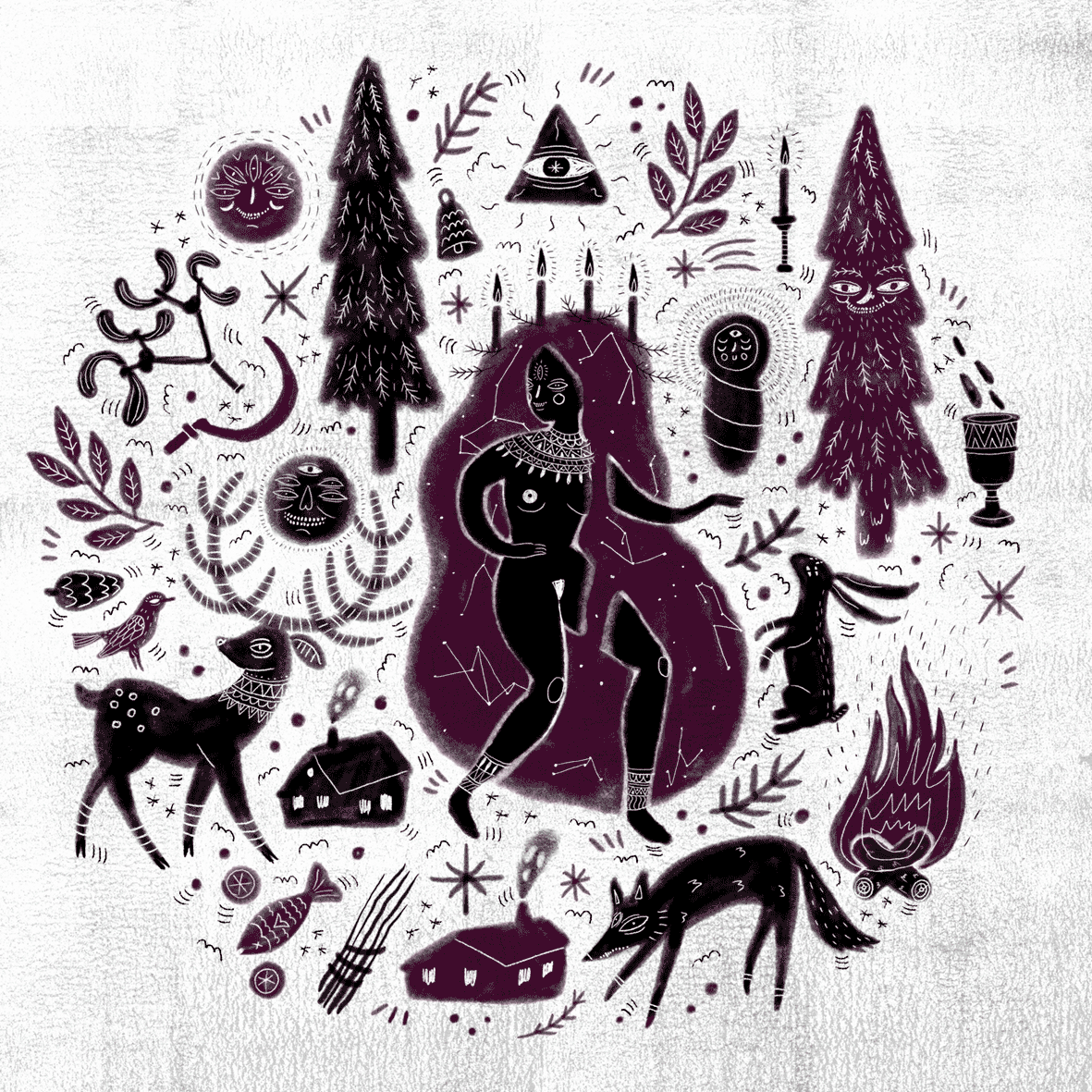The Wheel of the Year is an illustration project of the eight sabbats of the Wiccan tradition: Yule, Imbolc, Ostara, Beltane, Litha, Lughnassad, Mabon and Samhain. While discovering the meanings of these events I'm including elements and symbols from other cultures which prove to be global as these beliefs revolve around the changing of seasons, nature and the movement of celestial bodies. Working on this series is also bringing me closer to nature and helping to accept the rules, laws and energies of the always changing river we all swim in.
The folklore behind these holidays is quite intertwined, there are a lot of different yet related versions and names for everyone and everything, so the aim of this series is not to be historically perfect, rather interpretations of these festivals based on the traditions and the present energies.
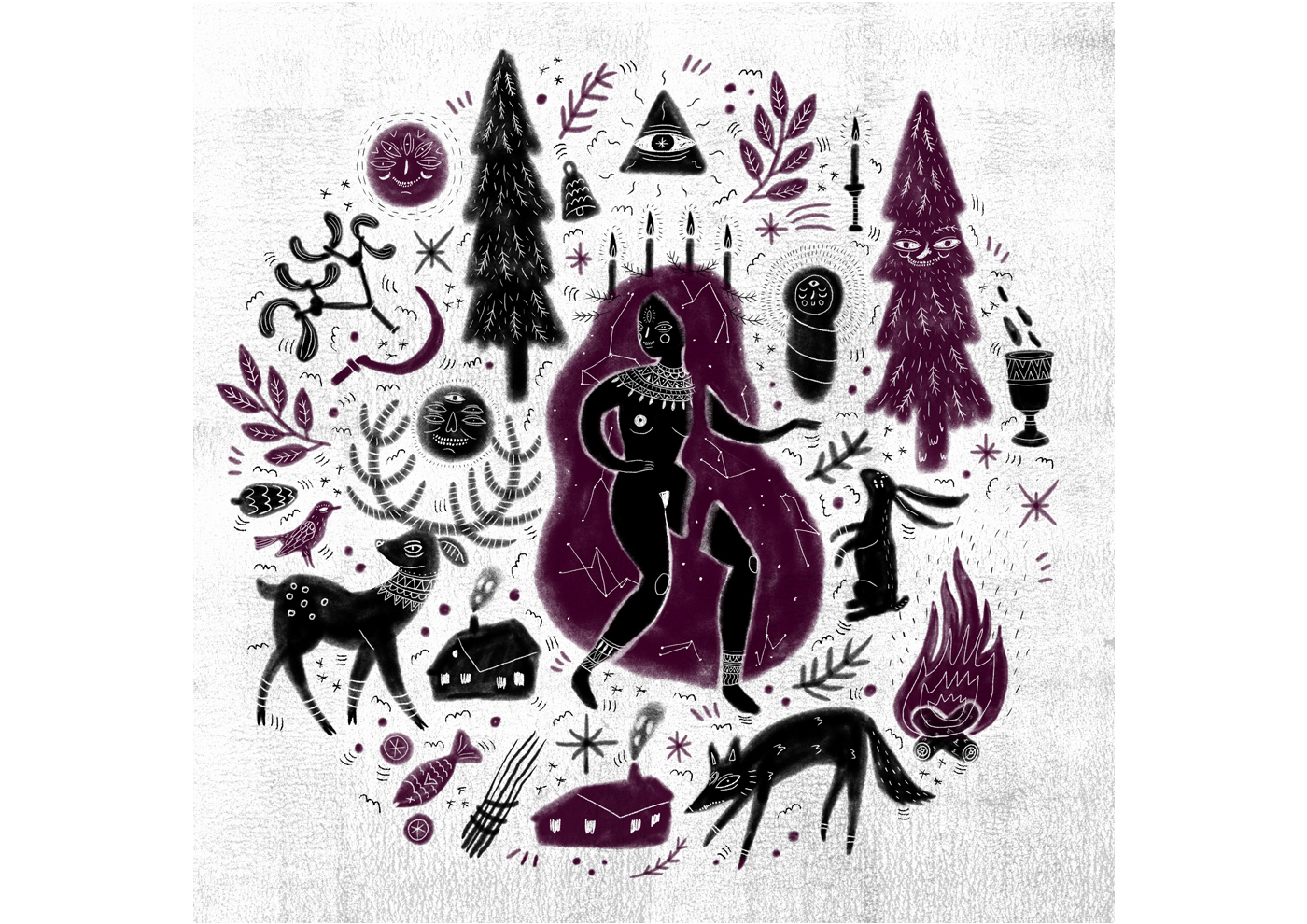
YULE (Yalda, Saturnalia, Karachun, Kwanzaa) is at the Winter solstice which is the shortest day and the longest night of the year. There are a lot of myths around it, but basically it's the rebirth of the new Sun, the Child of Pomise.
It's also the time of looking inside and contemplating, embracing and forgiving to our dark side, and getting ready for the new light and resurrection.
I chose several symbols connected to this time of the year, like the White Goddess, the newborn, the fish, the fire of the Yule log, the sickle, the deer, pine trees and mistletoe.

IMBOLC (Oimelc, Brigid’s Day, Candlemas, Feast of Pan, Lupercalia) is the beginning of the Spring, light, purification and fertility, traditionally the time of the lactating sheep. Brigid is the Goddess of Healing, Poetry, Midwifery and Smithcraft, holding the fire of inspiration. Winter is mostly gone, the first signs of Spring appear and the Goddess changes from Crone to Maiden. The God is still a young boy, but his increasing power can be felt as the days get longer. Symbols are lot of candles, snowdrops, blacksmith tools, sheep, bread and milk, triskele.
.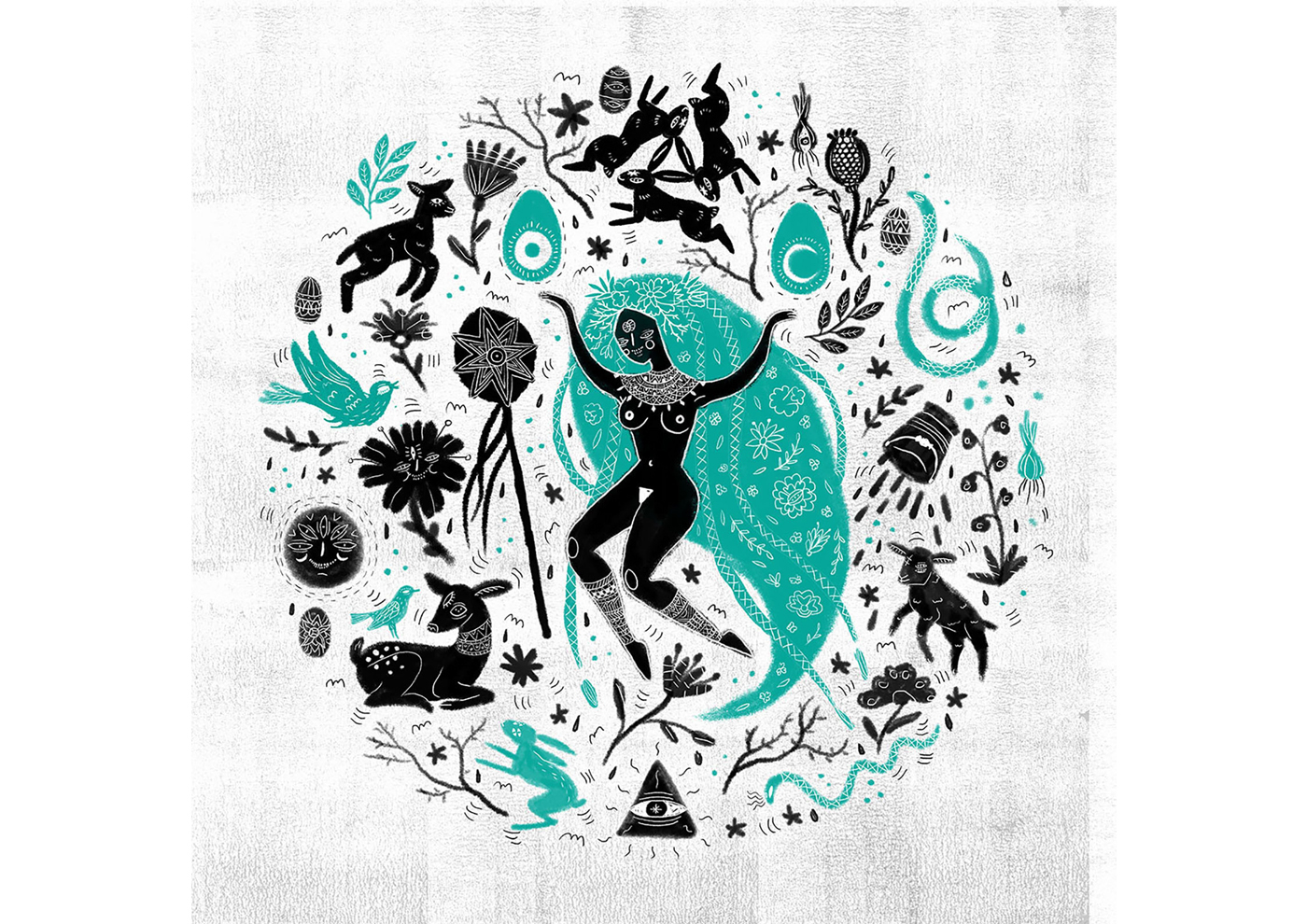
OSTARA or Ēostre is at the Spring Equinox and everything is about renewal (flowers, water) fertility (egg, rabbit) and hope (lamb). As a folk tradition we paint on eggs and boys pour water on girls they like. It's the time of admiring the first flowers and planting seeds while the weather is finally getting warmer. We can leave behind everything like a worn coat that doesn't support us anymore.
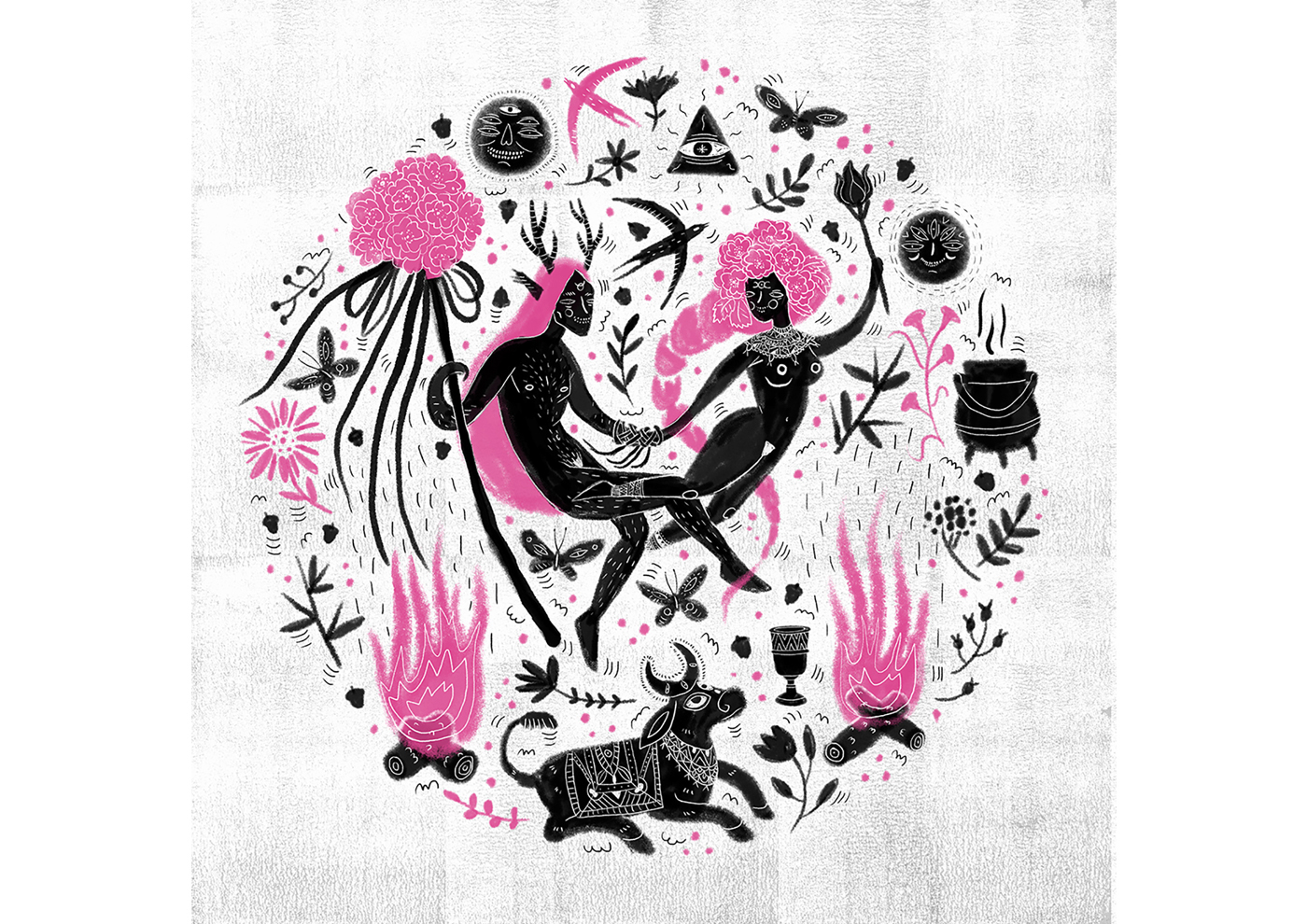
BELTANE (Mayday, Walpurgisnacht, Vappu, Heksennacht, etc.) is around the first of May and represents the beginning of the Summer. It is the last of the three spring fertility festivals and is about honouring life and light. Bonfires are lit and maypoles are set, farm animals are let out to graze. The veil between this world and the otherworld gets thinner so faeries can enter freely and the Goddess takes the God's hand.
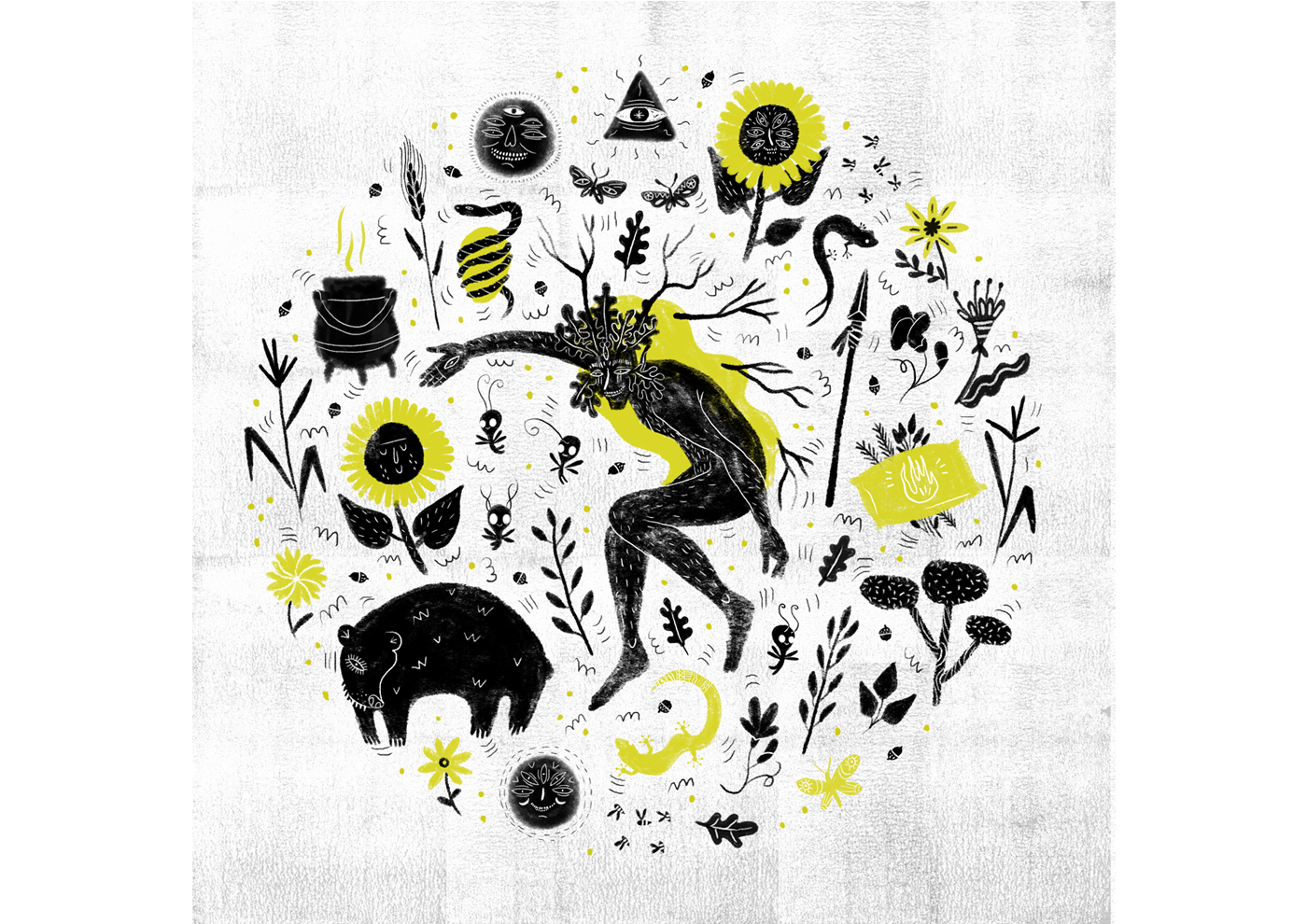
LITHA (Midsummer, Gathering Day, etc.) is on the longest day of the year, the Summer Solstice. It’s a celebration of the Sun and masculine energies (symbolized by the spear and similar shapes), yet from this point days are getting shorter, the Sun God is
getting weaker to be defeated by Winter. The crops are in full growth, harvest is getting closer and herbs are ready to be gathered. The main character of this Illustration is the Oak King in his full power, surrounded by fairies, a bear, a spear,
lizards, sunflowers, ripe grain and herbs.
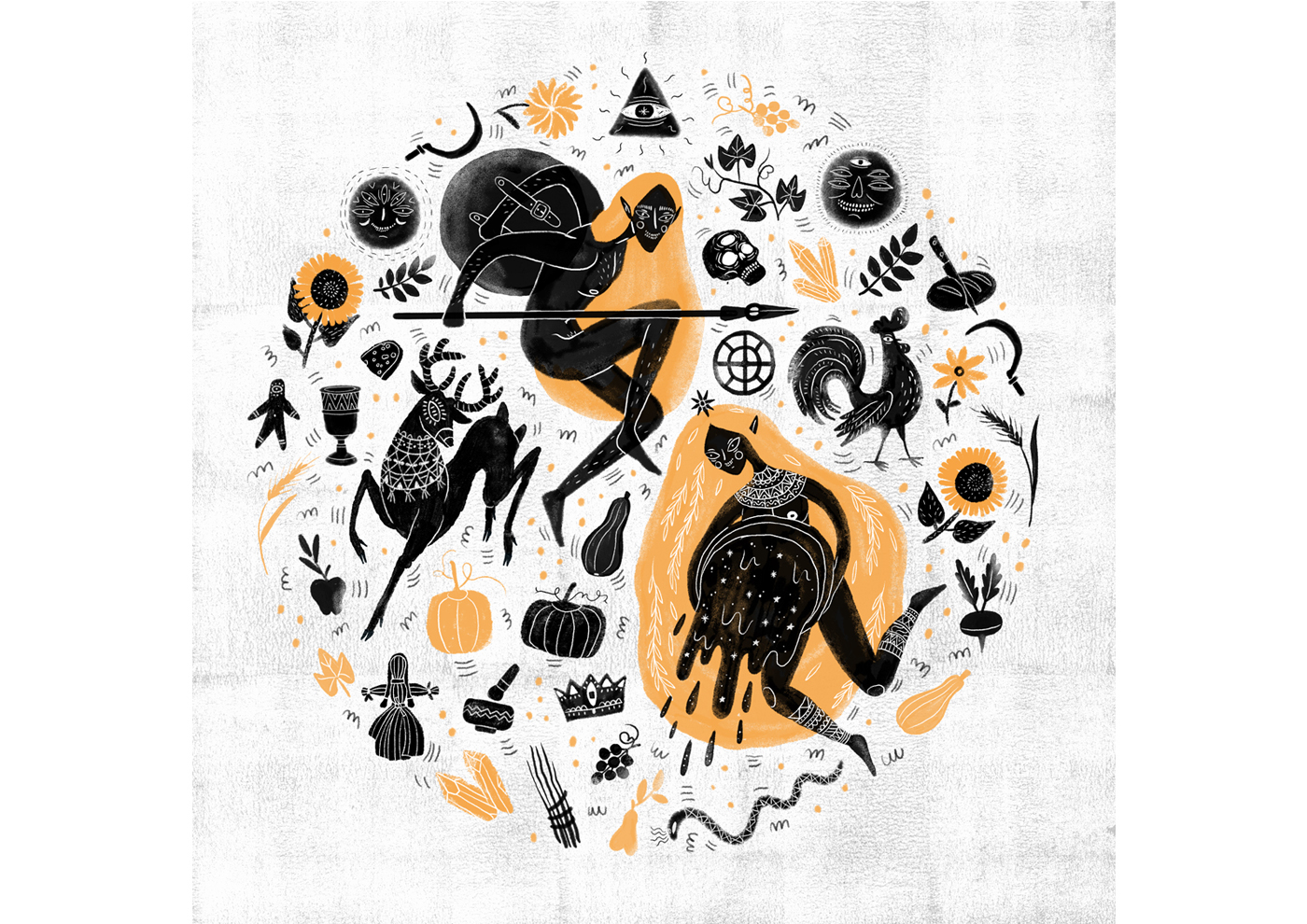
LUGHNASADH (Frey Fest, Lammas=Loaf Mass) is the first harvest festival when the Sun God transfers his power into the grain, getting sacrificed for the people's sake when the grain is harvested. It’s then made into the new bread. The first fruits of the harvest are celebrated, also symbolically: we can be grateful that our plans that we had at the start of the year are coming true.
The festival was named after the Irish god, Lugh (on the picture) who was a youthful warrior associated with skill, crafts and the arts. Some traditions of the day are athletic contests, matchmaking, feasting and trading. The goddess on the illustration is Danu, an ancient water deity probably behind the name of the river Danube.
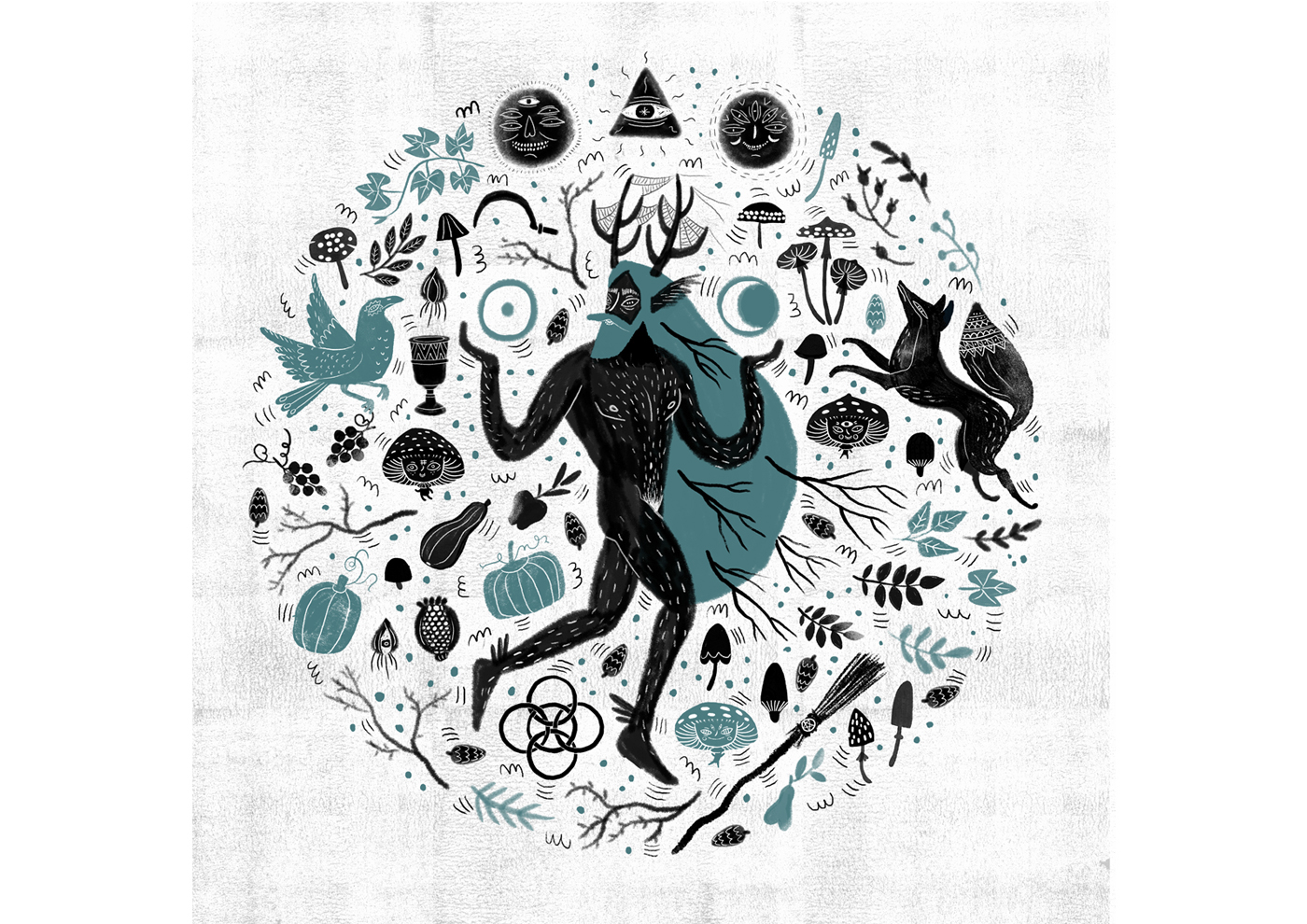
MABON at the end of September is the second of the three harvest festivals. At this time of equal day and night nature is in balance. We can harvest the results of our actions and be grateful for the fruits of the earth, successes and endings, resting after the hard work. Good time to finish old projects and also plant the seeds for new beginnings and changes. The god here is the Horned God, getting tired but still in his last balanced moment. Some symbols here are the broomstick, crow, fox, forest plants, falling leaves, branches, ripe fruit, sickle, flower bulbs.

SAMHAIN (Halloween, Day of the Dead) is the closing of harvest and the time of death. The nature is going to sleep, and the spirit world is yet again coming closer to the material world. It’s time to light a candle and remember our ancestors and deceased loved ones, also letting the Old go and making space for the New. 1st November is New Year’s Day for witches. The Goddess is turning into the Crone while the God is having his fully developed antlers as a symbol of the hunted deer. Some other symbols are pumpkin lanterns, candles, crystals, broomstick, ghosts, cats, skeleton raven apple, rosemary and bat.
